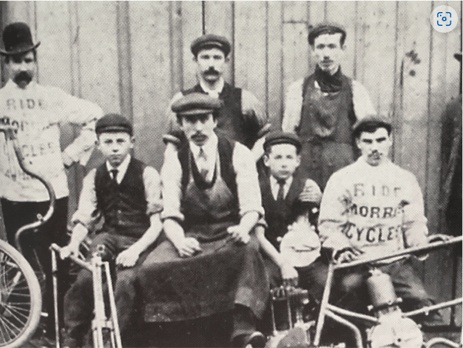
1877 – 1911
The Begininng
Born in Worcester, England, in 1877, William Richard Morris moved to Oxford with his family at the age of three. During the 1890s bicycle boom, he set up his own business after learning to repair bicycles through an apprenticeship. He then started to build and repair bicycles from his mother’s shed before setting up a bicycle shop in Oxford, aged just 16. Morris successfully demonstrated his bikes’ superiority through cycling races, and he then ventured into motor vehicle manufacturing, debuting the first Morris motorcycle in 1901, marking the inception of his automotive journey.
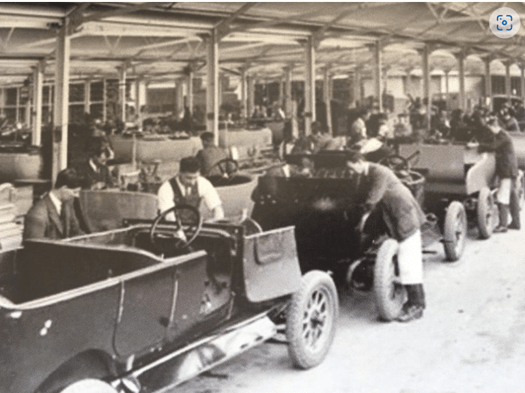
1911 – 1925
Early Years
Selling his bicycle business in 1910, Morris built a new factory in Oxford to sell, repair and garage motorcars. The opulent and modern “Morris Garage” was known by the Oxford Times as “The Oxford Motor Palace”. It was there, that the first Morris Oxford “Bullnose” graced its floors. In 1913, offering a high-quality passenger car for the middle classes. By 1914, Morris was producing 100 cars per week but the outbreak of World War I necessitated the change of production, turning him into a crucial manufacturer of munitions and mine sweepers.
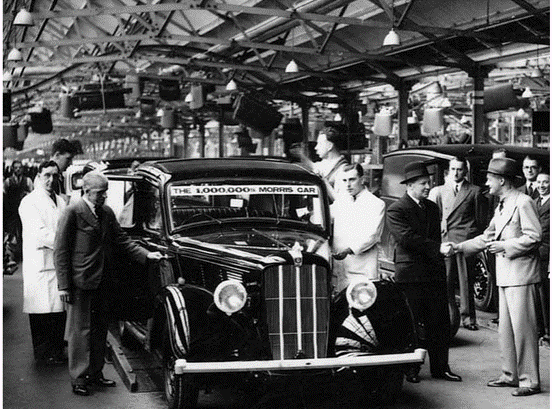
1925 – 1939
Building an Empire
Post World War I, Morris swiftly returns to car production, rapidly expanding his organisation. By 1925, Morris Motor became Britain’s largest motorcar manufacturer, a position which it held until World War II. In 1930, Morris was awarded a Baron. He became Lord Nuffield in 1934, reflecting his growing influence. Two years later, “Morris Motors” achieves a remarkable milestone, producing 100,000 cars per year, constituting a third of Britain’s total production, from his factory in Cowley, one of the most advanced plants in Europe. The pinnacle comes on May 22, 1939, when the millionth Morris motorcar, a symbol of excellence, rolls off the production line and was honourably gifted to a local hospital.
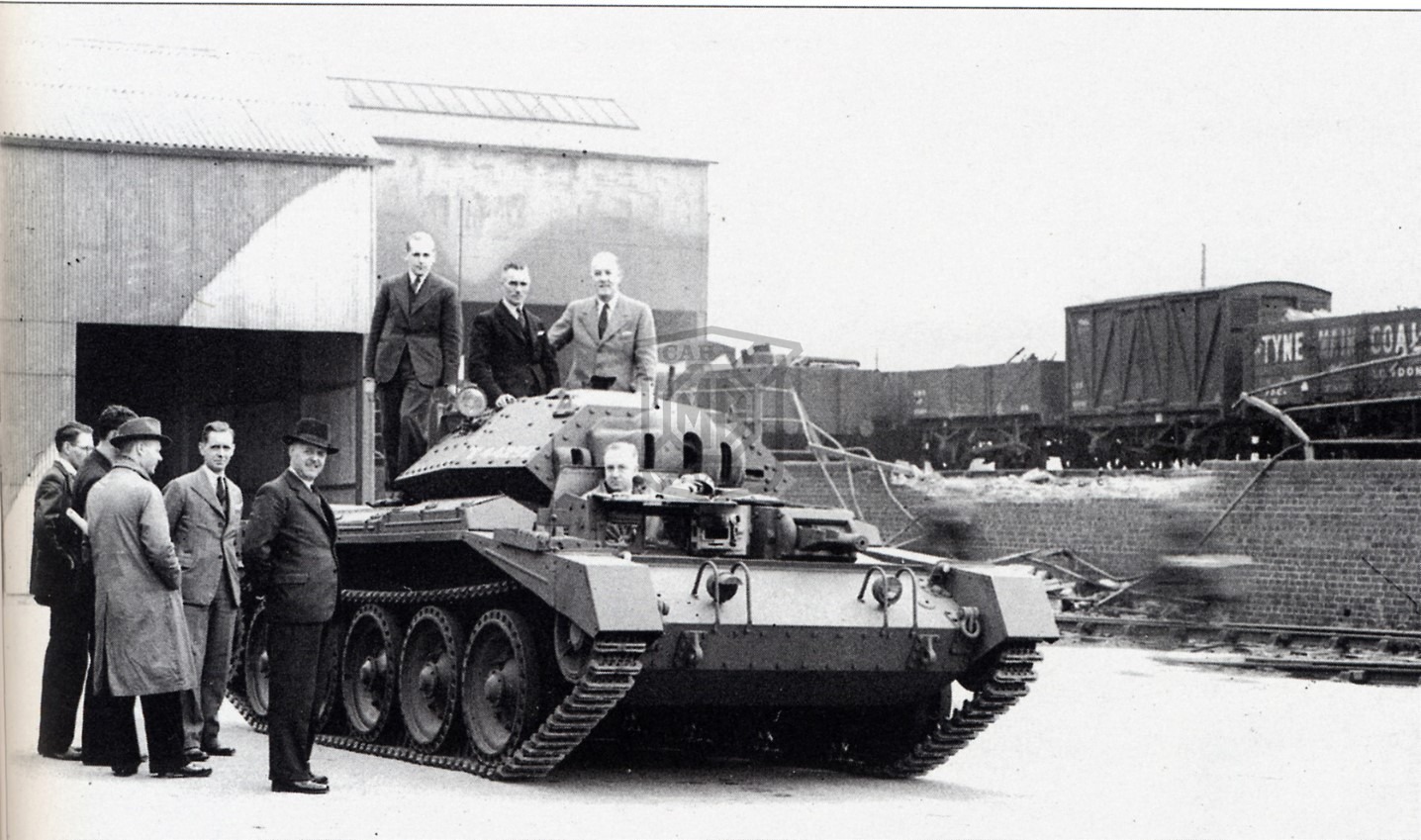
1939 – 1945
World War II
During WWII, Morris played a vital role working with the British government to prepare for the war. His main production facility, the Cowley plant, with 63,400 workers, was fundamental in keeping Britain’s RAF (Royal Air Force) airborne and strong, rebuilding the fleet repeatedly. Morris also designed and produced tanks, which included “Cavalier”, “Crusader” and “Cromwell” models and these proved a great asset to the victorious Allied Army and these wartime contributions were massively instrumental in Britain’s defence and rescue operations.
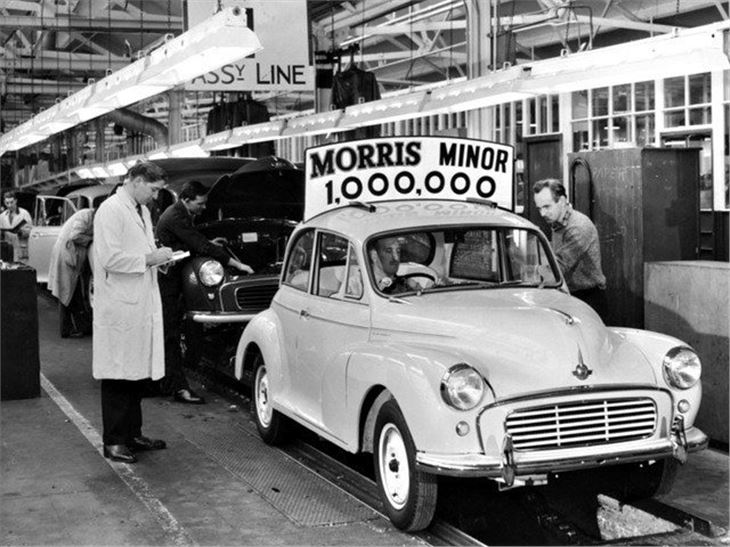
1945 – 1963
Backbone of British Industry
Post-WWII, Morris played a leading role in bringing Britain back to prosperity. His factories in Oxford, Birmingham, Coventry and Abington manufactured a wide range of vehicles for global markets. Morris Motors built Morris, Morris Commercial, MG, Riley and Wolseley branded vehicles. The iconic “Morris Minor” and legendary Mini-Minor, were recognised as some of Morris’s greatest automotive achievements symbolising popular British culture. These achievements, especially the Morris Minor becoming the first British car to sell over a million units, marked Morris’s pivotal role in automotive history, garnering instant global acclaim.
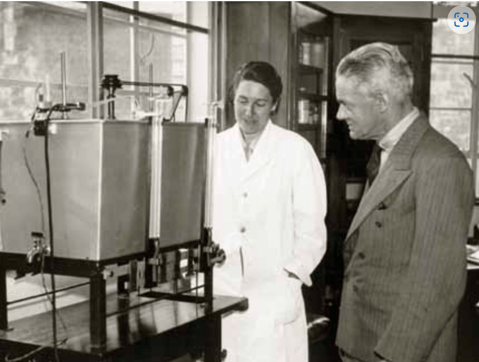
1945 – 1963
The Giving of Millions
Beyond industry, Morris emerged as Britian’s greatest philanthropic titan, donating £30 million (£1.5 billion in today’s money) to charity, primarily on advancing healthcare and education. Some of Morris’s largest donations were to the University of Oxford, donating two million pounds (around £120 million in today’s money) to establish its modern Medical School and to Nuffield College. Morris also strongly believed in employing seriously disabled people and by the early 1950s, there were over 700 seriously disabled people working for the Nuffield Organisation.
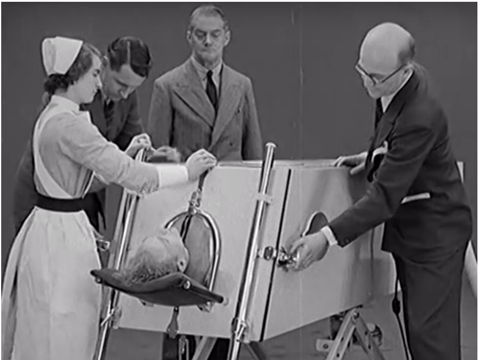
1945 – 1963
Contributions To Healthcare
Morris passionately leveraged his expertise and workforce to elevate healthcare. Amid the 1940’s and 1950’s polio epidemic, he deployed his Oxford factory to churn out thousands of free respirators, distributed generously to Commonwealth hospitals. In 1958, Queen Elizabeth II acknowledged Morris’s profound contributions, bestowing upon him the Companion of Honour—an exclusive honour restricted to only 65 living members.
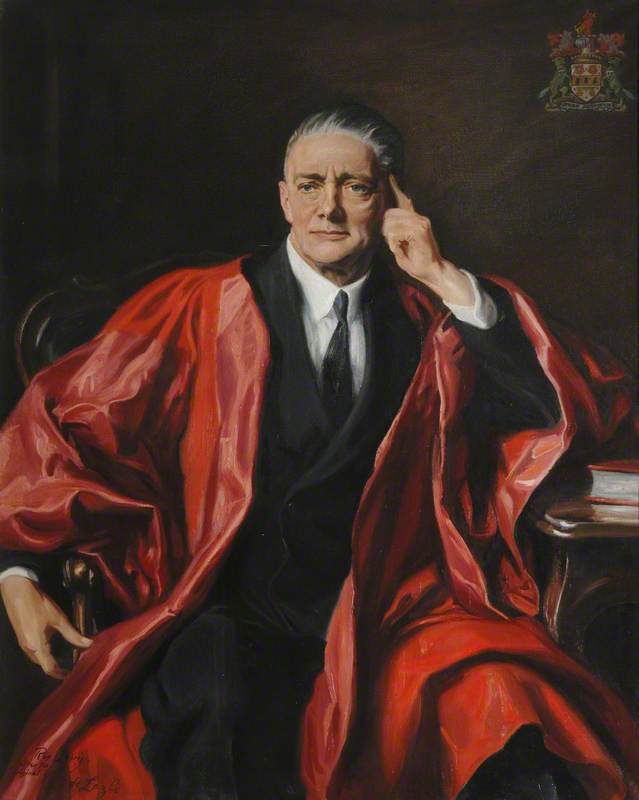
1963 Onwards
William Morris’ Legacy
William Morris breathed his last on August 22, 1963, at the age of 85. Tributes were paid worldwide. The late Queen Elizabeth II sent a telegram expressing her deep sorrow, saying: ‘I am deeply distressed to learn of the death of William Morris whose many generous benefactions will long be remembered especially in Oxford.’ The Royal Family, joined the world in mourning, attending Morris’s funeral at St Paul’s Cathedral, London. Britain had lost its greatest industrialist and benevolent philanthropist. Yet, Morris’s legacy thrives; Nuffield College remains a pivotal hub for social science research, and Nuffield Health stands as the UK’s premier not-for-profit healthcare provider.

